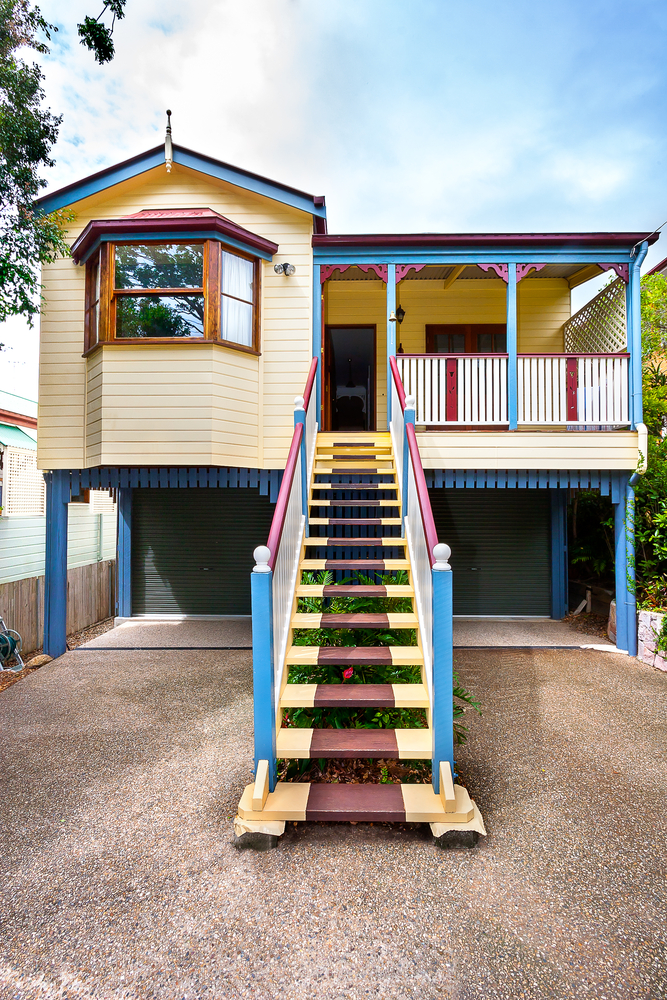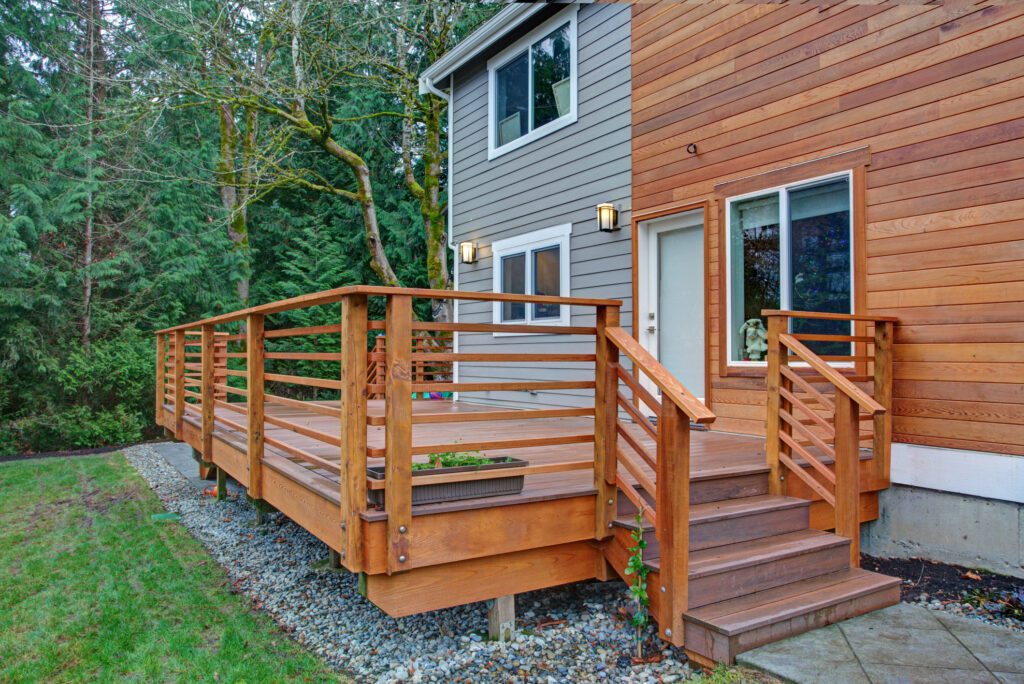Mobile home skirting has many benefits. It can be a practical and cost-effective way to enhance the appearance of your home and provide protection against the elements. Overall, mobile home skirting offers a range of benefits that contribute to the property’s comfort, durability, and attractiveness, making it a valuable investment for homeowners.
Materials Needed:
- Plywood or lattice panels
- Treated lumber or galvanized metal framing
- Screws or nails
- Drill or hammer
- Circular saw or hand saw
- Measuring tape
- Level
- Insulation (optional)
- Paint or sealant (optional)
Step-by-Step Guide to Create Mobile Home Skirting:
- Measure and Prepare: Measure the perimeter of your mobile home to determine the amount of skirting material you’ll need. If your home is on uneven ground, you may need to account for variations in height.
- Choose Skirting Material: Decide whether you want to use plywood, lattice panels, or another material for your skirting. Plywood provides solid coverage and can be painted or stained to match your home, while lattice panels offer ventilation and a more decorative appearance.
- Frame the Area: Using plywood, you must frame the area with treated lumber or galvanized metal to support the panels. Cut the framing material to size using a circular saw or hand saw, and attach it to the bottom of the mobile home using screws or nails. Make sure the framing is level and securely attached.
- Cut Skirting Panels: Measure and cut the panels to fit between the framing, leaving a small gap at the top for ventilation. Use a circular saw or hand saw to make precise cuts.
- Install Skirting Panels: Attach the panels to the framing using screws or nails. Make sure the panels are level and securely fastened.
- Add Insulation (Optional): If you live in a climate with extreme temperatures, you may want to add insulation behind the skirting panels for energy efficiency. Cut insulation size and place it between the skirting panels and the mobile home.
- Finish: If desired, paint or seal the skirting to protect it from the elements and enhance its appearance. Consider using a stain or sealant designed for outdoor use and can withstand harsh weather conditions.
- Maintenance: Regularly inspect your skirting for damage or signs of wear, and make any necessary repairs to ensure it continues to protect your mobile home.
Benefits of Mobile Home Skirting
Mobile home skirting serves several important purposes, offering both practical and aesthetic benefits:
- Insulation: Skirting acts as a barrier that helps insulate the underside of the mobile home, preventing heat loss during colder months and maintaining cooler temperatures during warmer months. This can lead to increased energy efficiency and reduced heating and cooling costs.
- Protection: Skirting protects against pests, rodents, and other animals seeking shelter or nesting space underneath the mobile home. It also helps prevent debris, such as leaves, branches, and litter, from accumulating beneath the house, reducing the risk of damage or blockage to the foundation, plumbing, or utilities.
- Enhanced Curb Appeal: Skirting can improve the appearance of a mobile home by concealing the structural elements underneath, creating a more finished and cohesive look. With various materials, colors, and styles available, homeowners can choose skirting that complements their home’s design and enhances its aesthetic appeal.
- Moisture Control: Skirting helps to regulate moisture levels underneath the mobile home by reducing the amount of moisture that can enter from the ground. This can help prevent mold, mildew, and rot, which can compromise the home’s structural integrity and pose health risks to occupants.
- Structural Support: Some types of skirting provide additional structural support to the mobile home, helping to stabilize and reinforce the foundation. This is particularly beneficial in areas prone to soil erosion or shifting ground, where proper support is essential for the home’s longevity.
- Compliance: In many areas, mobile home skirting is required by building codes or regulations to ensure proper maintenance and safety of the property. Installing skirting can help homeowners comply with these requirements and avoid potential fines or penalties.
- Privacy: Skirting creates a barrier that enhances privacy by preventing visibility underneath the mobile home. This can be especially important for homeowners who use the space beneath the house for storage or want to maintain a sense of seclusion on their property.
Overall, mobile home skirting offers a range of benefits that contribute to the property’s comfort, durability, and attractiveness, making it a valuable investment for homeowners.
Few More Pointers for Home Skirting

*Mobile home skirting ideas are an essential part of your home. More than just decorative, mobile home vinyl skirting protects the underbelly of your home from critters and weather, both of which can cause damage.
*It can provide valuable storage space for things you don’t use daily. While not usually insulated, mobile home vinyl skirting still provides some barrier to extreme temperatures, so the home’s insulation can do a better job.
*The mobile home’s metal skirting and its framework do not provide any additional structural strength to the mobile home. It is supported by their structure, a pair of I-beams running the length of the metal manufactured home skirting the side of the trailer and sitting on stacks of two cinder blocks below, called piers.
*So all the cheap mobile home metal skirting structures need to be strong enough to support the weight of the mobile home metal skirting ideas and hold it in place through the weather and the vagaries of life.
*Remember that children will run into it with toys, so it has to be pretty intense and rigid to withstand day-to-day use.
*Skirting for mobile homes only, sometimes called “underpinning,” is a regulatory requirement. However, not everyone pays attention to that bit of expensive regulation, which is not always enforced. Installing mobile house skirts is not just aesthetics. Providing quality siding is a good choice for the homeowner.

DIY Mobile Home Skirting Panels
The mobile home skirt is available in different sizes and designs. Various models of vehicles come at different prices and have corresponding advantages and cons. The cheaper ones generally are stiff, and the thinner ones are cheaper. Both appear to appear different in appearance. The only way to change a house’s exterior is to alter its skirts and linings. Contrary to the traditional house, mobile homes always need a skirt panel.
Vinyl Skirting
Vinyl skirting can be used on mobile homes. It is also called ” trailer skirting”. It’s a beautiful addition to one’s style.
Simulated “Rock”
Our word rock skirt refers to a skirt that is not rock. It has a different texture than rocks, but it does appear that the rocks are replicated. This mobile house skirt panel comes in almost all neutral colors. The most popular color is grey or brown. Despite the appearance of their skirts, the simulated stones are built of polyethylene. This is a cost-effective alternative with a more natural-looking surface than vinyl.
Faux Rock Skirting
Faux rock skirts are trendy for being somewhat robust and will stay in place even in a place of vegetation. This is because weed is not easily damaged. The faux stone has a highly light polyurethane substance and can be misinterpreted in some areas from a distance. One can’t afford an actual rock, but the price would be much higher. To add an aesthetically pleasing appeal, you could use natural brick rocks.
The benefit of rock is that it protects homes and reduces the effects of weather conditions like rain, snow, or cold. Although faux polyurethane cladding is costly, it is gorgeous. In some cases, a frame is created to make it secure.
Concrete and Bricks
Concrete cinder blocks are durable and easily assembled. Reclaimed cinder blocks have a higher price, but the replacements are cheaper at a lower expense. If a corner is broken, put it on its sides. Installing cinder block skirting can be laborious, but their long-term benefits make them worthwhile. The so-called cinders are available in standard foundation blocks. Recyclable stones make an excellent skirt material.
Brick Skirting
Brick skirts are possible with concrete skirting using blocks. The whole thing depends upon the goals. Bricks are more costly than cinderblocks, but fake bricks are often just as expensive. Installation is different, but real bricks are much harder to put up.
Cinder Block and Brick Skirting
Depending on the material of the resin and vinyl skirts, they may be similar. If you select these skirts, you do not need to worry about getting a foundation to make up the structure, but it can make a nice exterior look like you’re on a foundation.
Decorative Brick and Stone Corners
If you have designed a design that consists of decorative brick or stone corners, it may require a corner base, which is secured after installing starter strips on each wall. Ensure the slits of the floor are a similar height. Decorative edges will be added when the panel has been installed. These parts are inserted into a corner base or placed on a starter sheet or a corner piece beneath.
Plywood Skirting
Plywood skirting involves creating a panel underneath. Once you’ve gathered the materials, you’ll need to attach wooden screws to the plank while leaving an overhang beneath. This overhang secures the skirting since it’ll wrap above it. You’ll need a panel where they can do plumbing work, repairs, and
The Cheapest Way to Skirt a Mobile Home
The cheapest way to skirt a mobile home typically involves using affordable materials and uncomplicated installation methods.
Here are some cost-effective options for mobile home skirting:
- Vinyl Skirting: Vinyl skirting is often one of the most affordable options available. It comes in various colors and styles, including faux stone and wood designs, providing a relatively inexpensive way to enhance the appearance of the mobile home. Vinyl skirting panels are lightweight, easy to install, and require minimal maintenance.
- Metal Skirting: Corrugated metal panels or sheets can be a budget-friendly choice for mobile home skirting. Metal skirting is durable, weather-resistant, and protects against pests and debris. Installation may require more effort than vinyl skirting but can still be relatively straightforward, especially for DIY enthusiasts.
- Plywood or OSB: Plywood or oriented strand board (OSB) is another cost-effective option for skirting. These materials are readily available and can be cut to size easily. While plywood and OSB may not offer the same aesthetic appeal as vinyl or metal skirting, they can be painted or stained to improve appearance.
- Lattice Panels: Lattice panels made from wood or vinyl are inexpensive and versatile skirting options. They provide ventilation while still offering some degree of privacy. Lattice panels can be installed using simple framing and support structures, making them a budget-friendly choice for DIY projects.
- Fabric Skirting: Fabric skirting, made from canvas or heavy-duty fabric materials, can be a low-cost alternative to traditional skirting materials. While fabric skirting may not offer the same durability or protection as other options, it can be a temporary solution or used in areas where permanent skirting is not feasible.
- Natural Materials: For a rustic or eco-friendly look, consider using natural such as bamboo, reed, or woven grass mats for skirting. These inexpensive materials can add a unique aesthetic to the home’s exterior. However, they may require more maintenance and may not provide the same level of protection as other skirting options.
Mobile Home Skirting Installation
Professional installers can deliver excellent quality service to the client that will last the entire day. Professional experts also provide insight. They can offer advice on what’s most appropriate in a particular situation. Depending on your situation, you can find skirting that suits you best.
A professional handles the stress and detail of installing the equipment.




